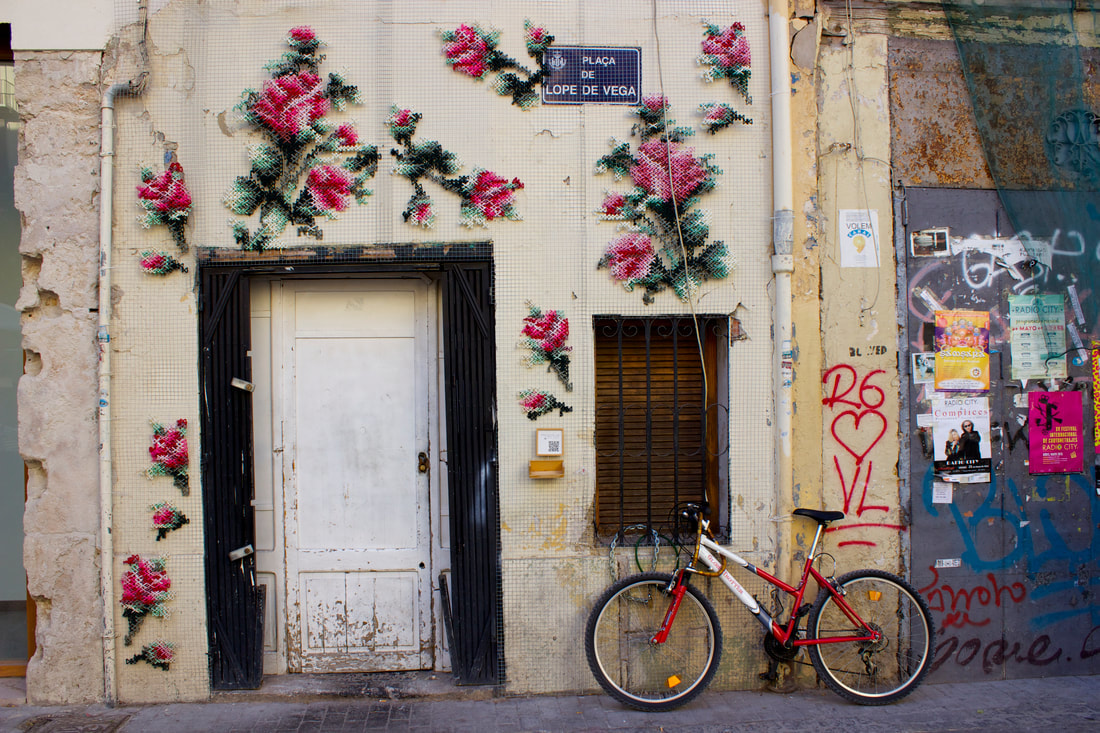With no interest in discovering modern Valencia, I spent time exploring the parks, seaside and historic places that make Valencia. If you’re looking to explore the historical roots in 24 hours or less, be sure to check out some of these places.
This historic bridge is the gateway between ancient and modern Valencia. Built in 1591, this is one of the oldest still-standing bridges in the city. Before visiting, or returning from, the garden below, admire the two statues, the Virgin Mary and St. Paschal. It’s a magical piece of history that should not be missed.
Without a care in the world, get lost in one of Valencia’s most prominent park. During the spring, beautiful blossoms flow in the wind, which at times, feels like its snowing purple petals. The air is fragrant, with plenty of orange trees to admire. Picture-worthy historical sites along the garden includes Real Palace, Torres de Serranos, a place to capture city views from a 1392 Gothic monument and Porta de la Mar.
This market is not to be missed while in Valencia. Whether you want a coffee, tapas or groceries, Colon Market is an eclectic mix of modern and traditional cuisines. The original structure dates back to 1916 and contains a mix of architectural designs including a hint of Gaudi. Colon Market attracts a variety of tourists and locals alike, some who purchase flowers and others who just want to enjoy a coffee and a smoke.
After the market head 1.2 kilometers toward Plaça de Lope de Vega. Here you’ll discover plenty of souvenir shops and street side cafes. The plaza is a central location to nearby historical sites. Explore La Lonja de la Seda, a 15th Century mercantile exchange, the 13th Century Valencia Cathedral or the Real Parroquia de San Martín Obispo y San Antonio Abad.
Nearby Plaça de Lope de Vega (150 meters) is Mercat de la Tapineria, a creative center located in the heart of Old Valencia. There are two plazas, Plaza Guillen del Rey and Plaza Cobertizo del Santo Tomas, which contain ephemeral stores, a bar and kitchen and La Bernarda. The plaza’s décor are as spirited as the Spanish themselves, colorful, vibrant and eclectic.
In case you haven’t eaten enough this trip, the historic Santa Catalina is a historic café that is “Home of two Centuries of traditions.” This café and bakery features countless traditional treats and horchata, a healthy, energizing and digestible beverage composed of Tiger nuts. The nuts originate from Egypt and Valencian’s mix it with sugar and milk to concoct a nutrient-rich “iced” beverage that locals eat with fartons. The idea originates from the 8th and 13th Century Muslim rule in Spain. Besides pumping your cells full of Vitamin C, E, calcium and iron, admire the Spanish tile that glimpses into Spanish history.
Along Carrer de Sant Ferran are several options for Spanish paella. Paella con verduras is my jam!
End your day with a beach walk admiring the sun setting over the grandiose seaside. With a total of 8 beaches, El Cabanyal is the most popular beach and features plenty of chic restaurants and beach cafes along the boardwalk. Before entering the beach, look for the locals grilling corn smothered in olive oil and sea salt. At night, several restaurants turn into a lounge/nightclub so don’t forget your dancing shoes.
To get to the beach, take the green line L5 metro to Maritim Serreria. From here walk to the sea or take the tram to Mediterrani.
This Lemon Tree article is now featured on GPSmyCity. To download this article for offline reading or travel directions to the attractions highlighted in this article, go to How to Spend a Day in Valencia, Spain.


















 RSS Feed
RSS Feed